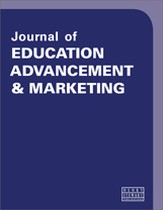The next chapter: How Ryerson University became Toronto Metropolitan University
Abstract
The murder of George Floyd in 2020 and the discoveries of unmarked graves at the sites of former residential schools in Canada in 2021 have put the spotlight on the treatment of Black and Indigenous peoples across North America. This focus is increasing calls for the removal of names, statues and other forms of commemoration tied to figures from Canada's colonial history. By virtue of its name, Ryerson University — named after Egerton Ryerson (1803–82), formerly the Superintendent of Education and a primary developer of Ontario's public education system, who is also viewed to have paved the way for Canada's residential school system — became a focal point in this broader debate about how to recognise Canada's history and take the important steps forward on the path to reconciliation. In April 2022, Ryerson University became Toronto Metropolitan University, the first post-secondary institution in North America to change its name to address colonialism and better reflect its values of equity, diversity and inclusion. The decision to rename the 74-year-old institution was unprecedented. There was no blueprint, no budget and — for reasons of confidentiality and to manage potential leaks — the marketing and communications teams had to develop and execute strategies and tactics without knowing the official name. As Canadians learn more about Canada's history and the treatment of Indigenous peoples, the pressure on other public institutions to act in a manner with the principles of true reconciliation will continue to rise. This paper shares how the university's strategic communications and marketing teams supported the renaming by developing and executing a comprehensive plan to engage, inform, educate and prepare the community for the launch of a new name and pave the way for adoption. It presents the key components of the plan, strategies and tactics used, evaluation metrics, challenges and how they were met, and critical lessons learned.
The full article is available to subscribers to the journal.
Author's Biography
Michael Forbes joined Toronto Metropolitan University (TMU) in 2011 as Manager of Public Affairs. Since then, he has served as the Director of Communications, Chief of Staff to the President and, most recently, as the Assistant Vice President of University Relations. Prior to joining TMU, Michael spent a decade in consulting, where he advised a range of clients, such as Procter & Gamble, the Canadian Competition Bureau and the Ontario Ministry of Health, on policy and communications issues.
Johanna Vandermaas joined Toronto Metropolitan University as a media relations officer in 2010 and has progressed into more senior roles since that time, currently serving as Senior Director, Communications. During her time at TMU she has had the opportunity to lead a number of interesting and challenging files, from hitchBOT the traveling robot, to pandemic communications, to renaming the institution. Prior to TMU, Johanna worked in public relations for consumer clients.
Karen Benner joined Toronto Metropolitan University in 2019 and leads integrated university communications and media relations. While this is her first stint working in higher education, Karen is a public relations professional with over 20 years' experience working in several different sectors, including technology, finance and non-profit. Karen was instrumental in the university's renaming launch strategy and development of media and web content.
